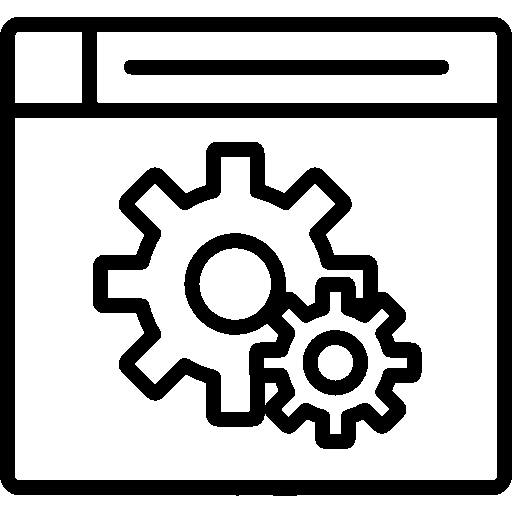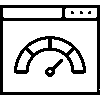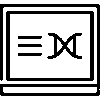- Products
- Platform
- Solutions
- Customers
- Support
- Pricing
 Website & Mobile & E-commerce
Website & Mobile & E-commerce
 CRM
CRM
 Operation & ERP
Operation & ERP
 Productivity
Productivity
 Support
Support
 Community
Community
 Learn
Learn
Application Support Point

The personnel attendance control application is prepared for managers and users to see their working hours. You can set how long your staff should work on a daily, weekly and monthly basis and check whether they comply with the working hours. By controlling the entrances and exits, you can more easily prevent delays and early exits.
- Version History
- Application Features
- User Manual
- FAQ
- Community
Definition
The Personnel Attendance Control application is a human resources management tool designed to track and record staff attendance, including entry and exit times, overtime, breaks, and leave days. It enables businesses to define various categories such as leaves, breaks, and overtime, associating them with individual personnel records. Additionally, the application provides access to critical information such as monthly shift schedules, work calendars, and personnel lists, facilitating efficient management of employee attendance and related activities.
Aim
The Personnel Attendance Control application’s main purpose is to manage employee working hours accurately and efficiently, enhance workforce productivity, and create a harmonious working environment. The application offers the following functionalities:
- Time Management: Tracking of employee check-ins, check-outs, overtime, and breaks.
- Leave Management: Management and tracking of employee leave days.
- Category Definition: Definition and management of various time categories such as overtime, breaks, and leave.
- Reporting and Analysis: Creation and analysis of monthly shift schedules, work calendars, and personnel lists.
Key Benefits
The Personnel Attendance Control application offers several key benefits:
- Regular Record Keeping: Ensures transparent and consistent documentation of working hours and leave, improving the clarity of personnel management.
- Increased Productivity: Enhances operational efficiency by optimizing workforce management practices.
- Legal Compliance: Helps businesses adhere to legal requirements related to working hours and leave.
- Staff Satisfaction: Boosts staff satisfaction and motivation by creating a fair and transparent work environment.
By modernizing personnel management practices, the application enables businesses to manage their human resources more strategically and effectively.
Entrance
It is the login screen of the Personnel Attendance Control application.

Entrances and Exits
This is the screen where information about the employees' entry and exit times is given in a tabular form.

The entry and exit times are given in a table form with CRMID, employee name, department, shift, leave status, leave duration, location, date, entry time and exit time information.
Working Schedule
The Work Schedule screen includes the work statistics on the employee's calendar.

Information on the employee's paid leave, unpaid leave, number of delays, shift duration, total break, working time, time worked, incomplete working time and overtime working time is displayed on this screen.
List Of Staff
Employees who have included their data in the Employee Attendance Card application are listed on this screen.

Personnel are given in a table with their name, company name, department, card ID and employment start date information.
Monthly Shift Schedule
This is the screen where personnel attendance is displayed on a monthly chart.

The chart includes a monthly table and staff names. The days that the staff is on leave are displayed on the table.
Indicators
This is the screen where indicators related to the application are displayed.

Adding Bulk Input Output
Bulk data addition is done from the Bulk Input Output Adding screen.

Bulk additions are made by entering shift, date range, personnel, entry and exit time information.
Options to exclude weekends and public holidays are available.
Data can be loaded via Excel.
After the edits are made, click the Save button.
Settings
You can access the settings document via the relevant menu.
Please click for related content.
General Settings
This is the screen where the general settings of the application are made.

The application color is determined and saved on this screen.
There is an option to activate the night increase.
Tolerances for situations such as early entry, late entry, early exit, late exit and overtime are also set on this screen.
Location Descriptions
This is the screen where the company's locations are defined.

A new location definition is added from the Add New button.
Shift Definitions
This is the screen where the hour intervals of the shifts are defined.

Shift definitions are listed in a table with their title, code, location, working days, creation date and default information.
A new shift definition is added from the Add New button.
Door Definitions
This is the screen where the company's entry and exit doors are defined.

Door definitions are listed in a table with door name, code, location and direction information.
A new door definition is added from the Add New button.
Door definitions are edited with the edit button.
Overtime Definitions
This is the screen where shift overtime definitions are made.

Overtime definitions are listed in a table with sequence number, overtime name, overtime type and code information.
A new overtime definition is added from the Add New button.
Break Definitions
This is the screen where break intervals within shifts are defined.

Break definitions are listed in a table with the order, break name, and flexible break.
A new break definition is added using the Add New button.
Public Holidays
This is the screen that lists the official holidays valid for personnel.

Public holidays are given in a table with information such as order, title, holiday type, start date, end date and number of days.
API Options
This is the screen where API Options settings are made.

From the API Options screen, you can choose whether the application will be separated by company.
Synchronization with External Source
This is the screen where synchronization settings with external sources are made.

The option to get data from an external source can be activated.
External source type, IP or host, SQL Instance, user name, password, database name and SGL query information are edited on the screen.
Edits are saved using the Save button.
Authorized Users
This is the screen where authorized users in company departments are determined.

Users are listed by department.
User authorization levels are determined on this screen.
Edits such as company and department name are made and saved.
Questions
Ask questions and get answers from other Entranet users.

















